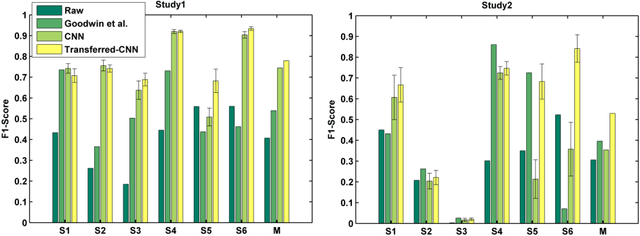Andrea Bizzego
Improving the efficacy of Deep Learning models for Heart Beat detection on heterogeneous datasets
Oct 26, 2021



Abstract:Deep Learning (DL) have greatly contributed to bioelectric signals processing, in particular to extract physiological markers. However, the efficacy and applicability of the results proposed in the literature is often constrained to the population represented by the data used to train the models. In this study, we investigate the issues related to applying a DL model on heterogeneous datasets. In particular, by focusing on heart beat detection from Electrocardiogram signals (ECG), we show that the performance of a model trained on data from healthy subjects decreases when applied to patients with cardiac conditions and to signals collected with different devices. We then evaluate the use of Transfer Learning (TL) to adapt the model to the different datasets. In particular, we show that the classification performance is improved, even with datasets with a small sample size. These results suggest that a greater effort should be made towards generalizability of DL models applied on bioelectric signals, in particular by retrieving more representative datasets.
Convolutional Neural Network for Stereotypical Motor Movement Detection in Autism
Jun 07, 2016



Abstract:Autism Spectrum Disorders (ASDs) are often associated with specific atypical postural or motor behaviors, of which Stereotypical Motor Movements (SMMs) have a specific visibility. While the identification and the quantification of SMM patterns remain complex, its automation would provide support to accurate tuning of the intervention in the therapy of autism. Therefore, it is essential to develop automatic SMM detection systems in a real world setting, taking care of strong inter-subject and intra-subject variability. Wireless accelerometer sensing technology can provide a valid infrastructure for real-time SMM detection, however such variability remains a problem also for machine learning methods, in particular whenever handcrafted features extracted from accelerometer signal are considered. Here, we propose to employ the deep learning paradigm in order to learn discriminating features from multi-sensor accelerometer signals. Our results provide preliminary evidence that feature learning and transfer learning embedded in the deep architecture achieve higher accurate SMM detectors in longitudinal scenarios.
 Add to Chrome
Add to Chrome Add to Firefox
Add to Firefox Add to Edge
Add to Edge